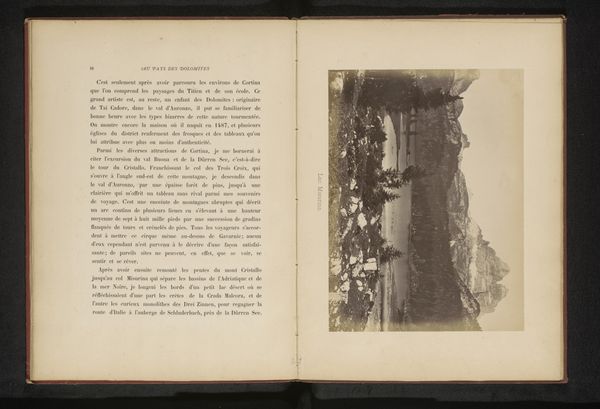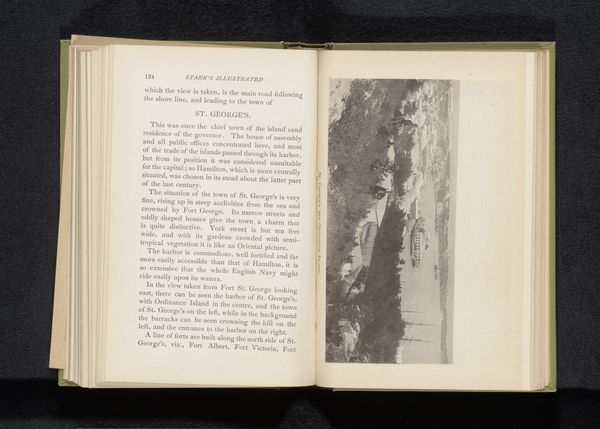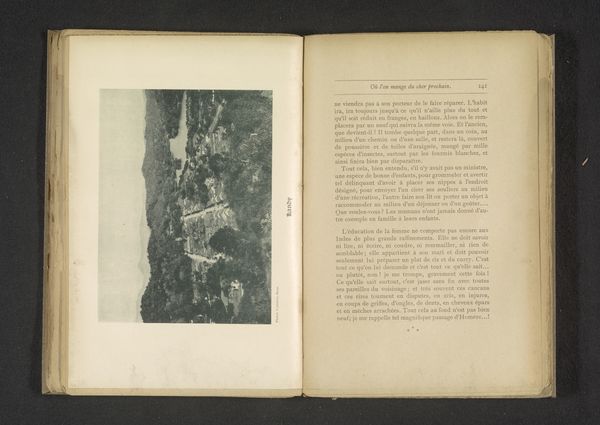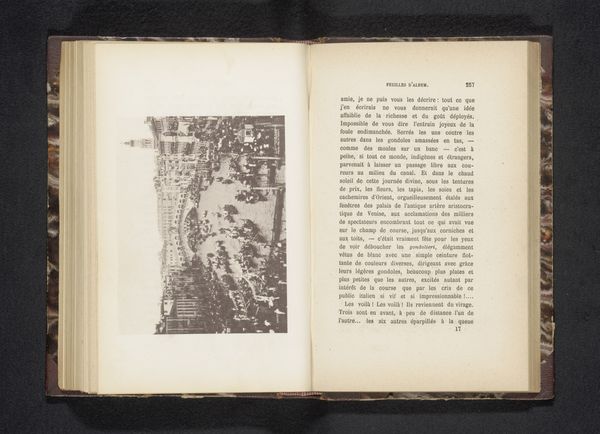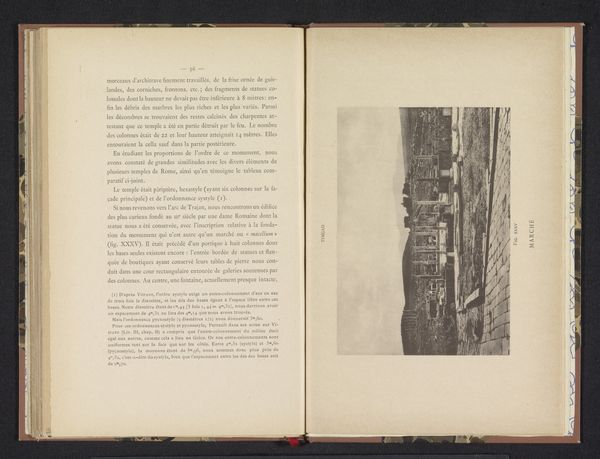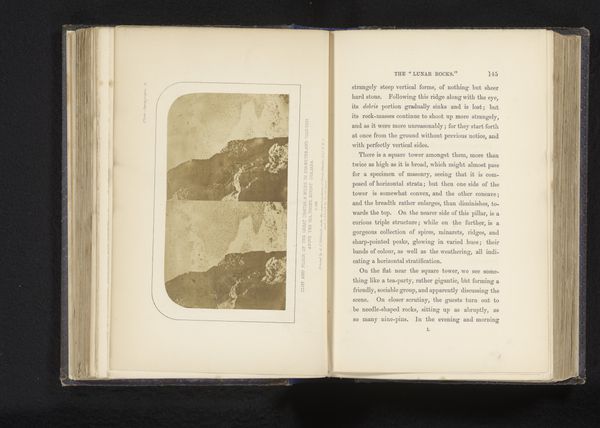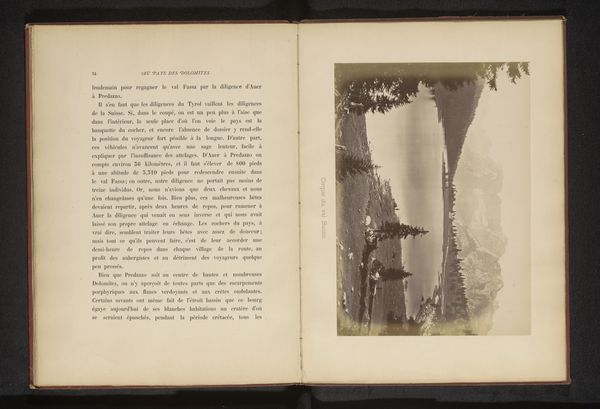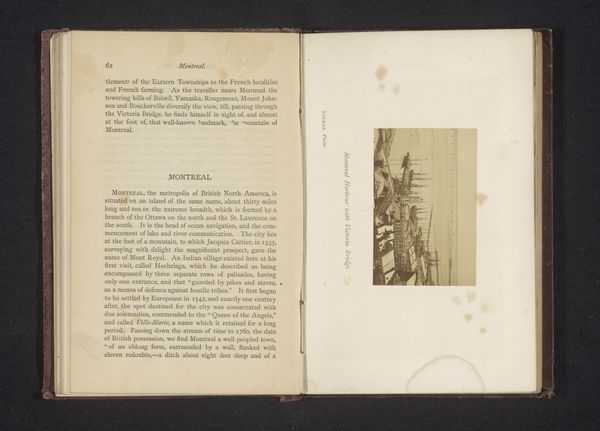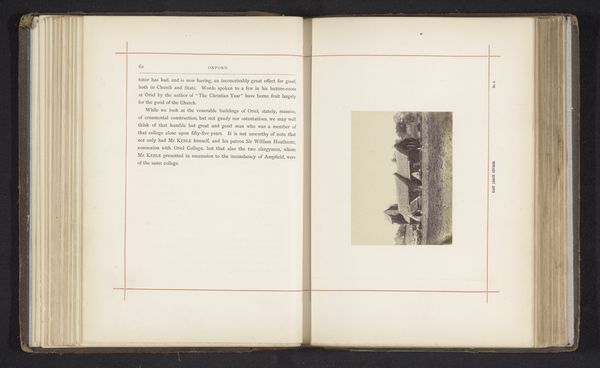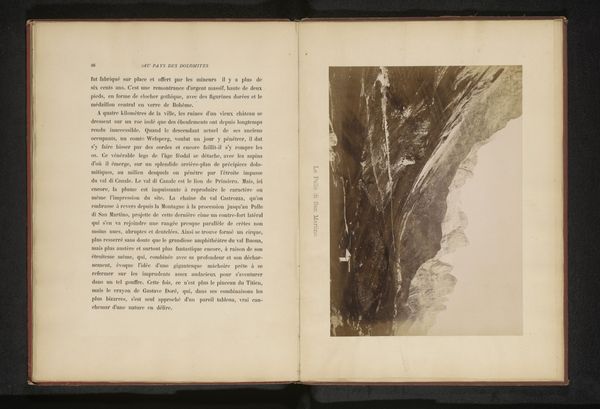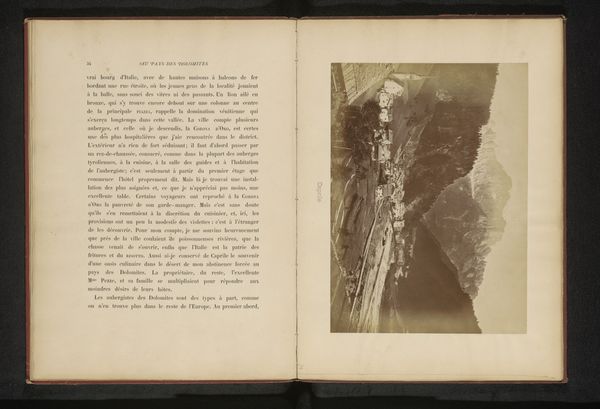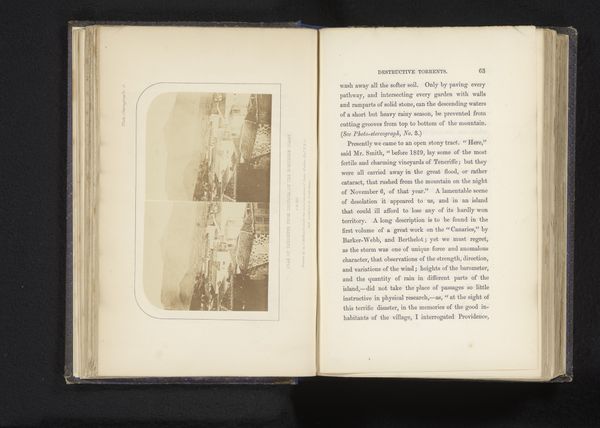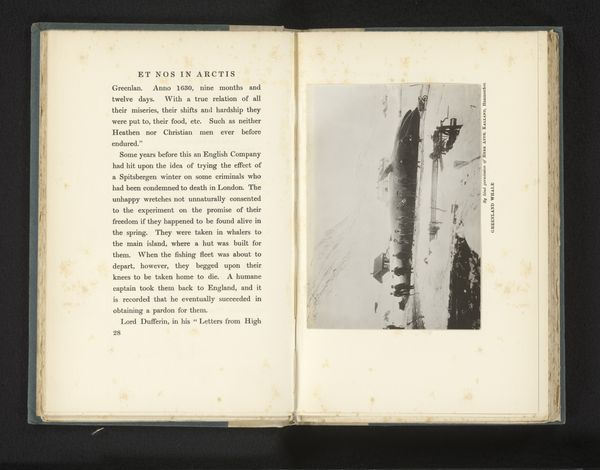
print, etching, photography
#
ink paper printed
# print
#
etching
#
landscape
#
photography
#
mountain
Dimensions: height 189 mm, width 263 mm
Copyright: Rijks Museum: Open Domain
Curator: Eugène Goblet d'Alviella's "View of Cortina d'Ampezzo in the Dolomites, Italy," an etching created before 1878, invites us into a world mediated by both photographic precision and the engraver’s craft. Editor: Mmm, stark. At first glance, the mood is melancholic. That muted palette and stark contrast, they carve out a landscape that feels... distant, almost otherworldly. Curator: I appreciate that observation. This print, relying on ink, paper, and possibly a printed base alongside the etching, captures more than just the physical space; it hints at the evolving relationship between art, technology, and the romantic ideal of landscape. What was previously accessible only to privileged adventurers becomes reproducible for a broader audience. Editor: Reproducible romance... I love that! And it hits you immediately—the sheer verticality of the scene! It emphasizes humanity’s relatively small footprint against these epic peaks. Did d'Alviella use a photograph as a base, do you think? The precision in the depiction of the buildings is remarkable for an etching. Curator: Indeed, the photographic origins seem clear. And this integration—photography informing etching— mirrors a larger cultural shift as the Victorian era grappled with representing both empirical reality and subjective experience. Consider the role of travelogues and illustrated publications at that time; they democratized access to 'untamed' landscapes but also shaped how the wider public came to perceive such spaces through a very constructed lens. Editor: "Constructed" being the keyword. While seemingly objective, that stark rendering speaks volumes. What *isn’t* shown is just as important. How are local communities represented in works like this? What impact did increased tourism have? Curator: Precisely! The politics of representation in these seemingly innocuous landscape depictions deserves continuous scrutiny. We should unpack the intersections of colonial gaze, class privilege, and romantic notions of "wilderness" in order to offer a thorough critical interpretation of this work. Editor: Okay, wow! All those new ways to think about mountains – makes my head spin a bit! Still, seeing it with all those layers now…makes me appreciate it more, though it kinda hurts too. Curator: It's a discomfort worth embracing. These visual relics of the past present an entry point into difficult dialogues about who gets to represent whom—and why.
Comments
No comments
Be the first to comment and join the conversation on the ultimate creative platform.
